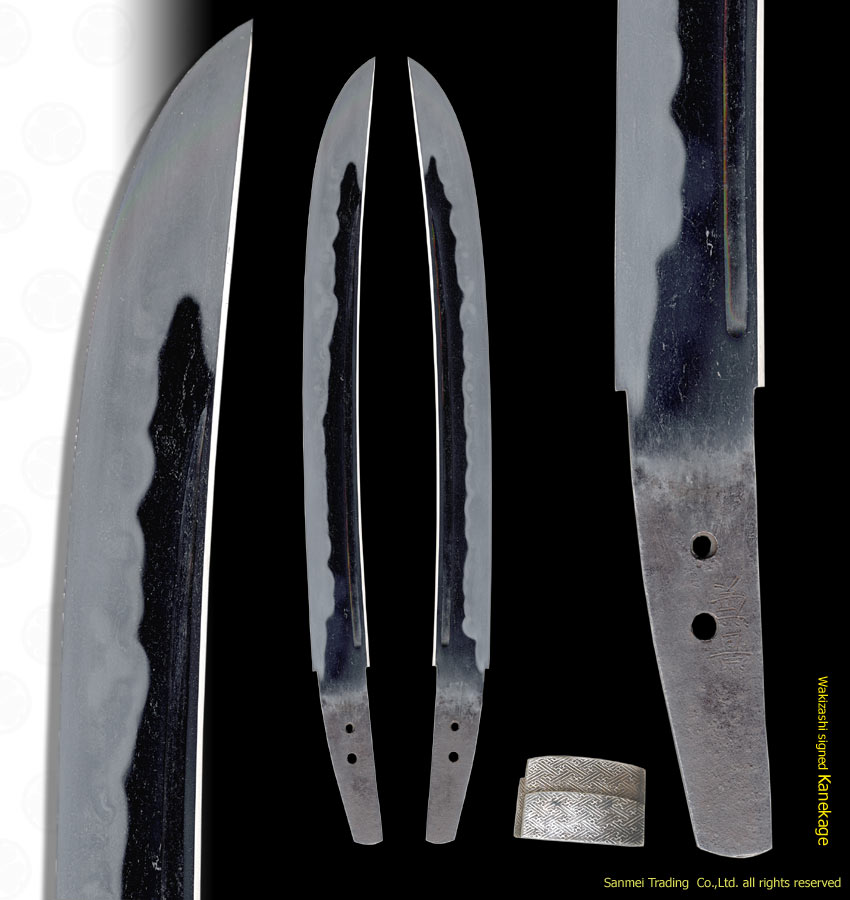Length of cutting edge36.3cm Curvature0.9cm Width of base33.1mm Thickness of base5.7mm
Kitae(forging pattern) : Kitae is fine Itame hada (wooden pattern), mixing in with flowing hada along temper side. There is utsuri reflection on surface.
Hamon(tempering pattern) : Hamon is nioi-based, starting with short straight yakidashi, gunome zig-zag mixing in with togari-ha (pointed outline) and an arrow notch outline. There is nioi-ashi feet works toward the cutting edge, upper the blade stronger the nie that generates Yubashiri and Tobiyaki jewel temper.
Boshi (tip): Boshi is wavy medium circle turn back in omote and ura is small circle turn back so-called JIZOOU-shape.
Nakago(tang) : The tang is UBU unaltered. Two Mekugi-ana (retaining holes). Higaki file marks. A shallow kurijiri heel shape. The signature in hakiomote is chiselled with two large character that reads KANE KAGE.
Wakizashi in Hira-zukuri shape which is brave, high-spirited, large-sized under the strong influence of Soshu-den school was very popular during end of Muromachi and Keicho era so-called MOMOYAMA period. KANEKAGE was founded Shizu-school and the first generation dates back to the Jyowa period (middle of 14th century) and several generations were recognized. This is a work of Kanekage (real name is Sho-ju-ro) who was active during Tensho period in 16th century, one of the representative sword smiths in Mino province. This wakizashi is very powerful and in fairly good condition and healthy for the age filled with an air of a bravery and the grace of beauty during Momoyama period.
Double silver habaki collar and comes in Shirasaya plain wood material sheath
